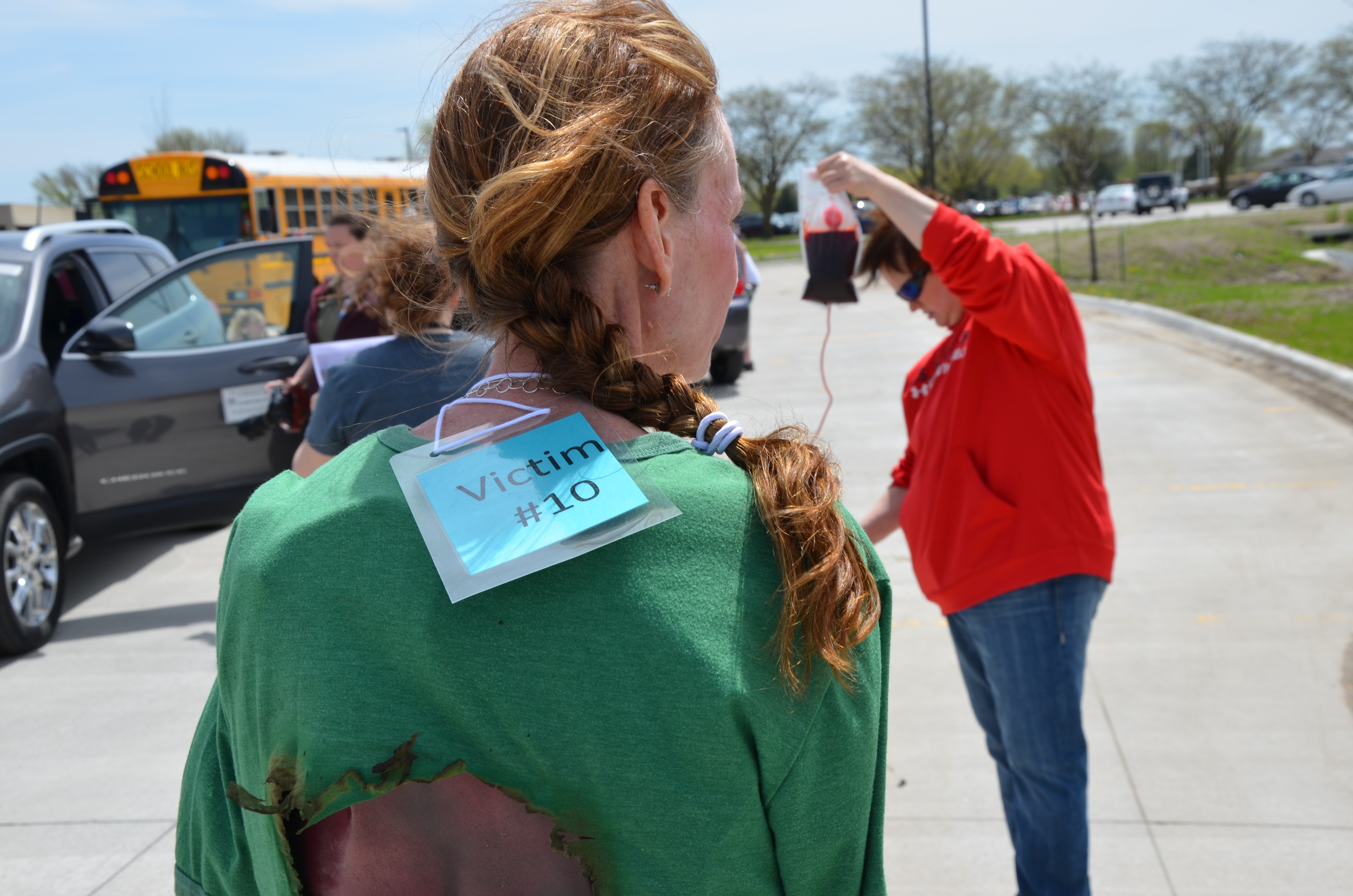
An increasingly popular simulation scenario is a mass casualty incident (MCI). An MCI is any incident in which emergency medical services resources run the risk of being overwhelmed by the number and severity of casualties.
Running a Mass Casualty Incident Scenario
Make a lot of blood. In general, a convincing MCI scenario needs a lot of materials. Stock up on moulage kits, bandages and gauze, manikins, and stabilization tools. Enough standardized patients (SPs) need to be recruited; both SPs and manikins should be strategically deployed.
Choose a spacious location. An MCI scenario requires space for several scenes, environmental hazards, and the healthcare students themselves. Account for a triage area, emergency vehicles, and press and community members.
Don’t make it easy. A true MCI is chaotic, so a simulation should integrate real-world challenges. In addition to belligerent standardized patients, a simulation should have lots of noise, for instance, a car horn honking continuously or sirens from rescue vehicles. Develop difficult subtasks within the usual triage challenges. In a recent simulation, one patient with a possible neck injury was found in the bed of a pickup truck. Students had to get creative in order to transfer the patient out of the truck and over to the distant triage area.
 Emergency nursing students tend to a standardized patient in a mass casualty incident scenario.
Emergency nursing students tend to a standardized patient in a mass casualty incident scenario.
Force cooperation. One of the biggest challenges in an MCI is fostering cooperation among departments. Nursing and EMS students have different opinions of “green” patients, or patients who can move themselves, and “red” patients, patients in need of immediate transport via emergency vehicle. A few emergency response educators note the struggles professional departments had during and after the events of 9/11 and recent active shooter hostile events (ASHEs). Structure a simulation that addresses these issues.
Intervene only if necessary. The debrief instructs students based on their successes and mistakes. However, some mistakes are important enough to immediately correct. For example, in a recent simulation, some students hadn’t noted the simulated inferno in the form of taped paper flames above one car. They were standing feet from an environmental hazard. It was imperative their instructor pause the simulation to point out this issue since it created an added challenge. How would the students manage their own scene when the adjacent scene posed a threat to their safety?
Monitor closely. No simulation is complete without a thorough debrief. Several educators should be in attendance monitoring their students’ every move and taking copious notes. If the scenario happens prior to the terms’ completion, the event can be referenced in the term’s remaining classes.
 Pocket Nurse recently sponsored an MCI simulation in Des Moines, Iowa.
Pocket Nurse recently sponsored an MCI simulation in Des Moines, Iowa.
Pocket Nurse recently supported a mass casualty incident (MCI) at the Des Moines Area Community College (DMACC). We got the opportunity to see their nursing, paramedic, and criminal justice students in action in a simulated multiple vehicle accident involving around 20 victims.
We’d like to thank the Des Moines Area Community College, as well as its faculty and administration for organizing and allowing us to attend the event.
Photo credits: Evan Stiger






